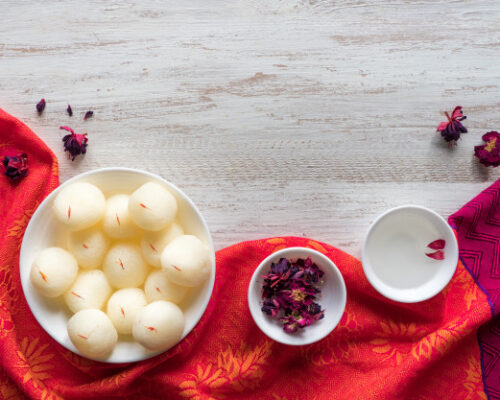In an earlier article on Yoga Techniques to manage stress, we read about the definitive benefits of Yoga and how it can combat stress. Here, after some more groundwork, we will introduce you to simple Asanas to get you started along the path. As always, learning under a Guru is important and learning under a Guru in a serene atmosphere conducive for learning as available at our Red Earth Gokarna, a wonderful Yoga Resort and Retreat hidden in the tranquil setting of Gokarna, away from the bustle of a habitation with mountains, the sea and secluded beaches, any of which forms the setting of nature unifying session of Yoga with our in house expert trainers and Guru.
What is Yoga?
The practice of Yoga, particularly Hatha Yoga, is all about stretching the body and achieving different poses while controlling breathe. A unique feeling of relaxation and energization of the body at once is unparalleled with almost nothing else creating a similar experience.

Yoga is malleable with many forms and variations depending on the end goal and the preferences of the teacher. While some move through the poses rather quickly, akin to an aerobic workout, others are more relaxed in style, with each pose being experienced deeply. Yoga is a spiritual exercise, while many see it purely as a form of exercise, the benefits are not lost on the practitioner no matter the motivation or intent.
Benefits
As mentioned, no matter the starting point, the physical benefits from Yoga is palpable that too when you time and again escape into Yoga retreats such as those conducted at Red Earth Gokarna, a Yoga and Wellness Resort in Gokarna. The psychological benefits, such as stress reduction and a sense of well-being and spiritual benefits, such as a feeling of connectedness with God or Spirit, or a feeling of transcendence attained in the tranquil atmosphere of secluded beaches and mountainsides of Gokarna around our wellness resort near Gokarna. Here we will explore asanas and vinyasas that can be done on any terrain so as to provide you with a repertoire of asanas to take on the road, in the forests, on the hills, and more.
But before we do that, let us understand the several mechanisms in Yoga that affect stress levels, minimizing it. By increasing mindfulness and by increasing self-compassion, the immediate and quick benefit accrued is a mood upliftment. Multiple studies vouch for it. Although we hear the trite, live in the moment, Yoga makes it concrete by helping you really live in the present.
Challenges
Like all good things, Yoga requires a commitment in time. We recommend to chose a time each day to get on the mat at the same hour, consistency is key. Although physical limitations could make it more difficult to practice Yoga, there are workarounds. Chair Yoga is a particularly good option for older people with joint problems. While a few feel self-conscious doing some of the poses, it is completely normal. You are not alone and with time, you will grow in confidence.
Planning ahead of time and organizing your work-life balance to enrol and attending a Yoga Retreat at wonderful wellness resorts such as Red Earth Resort near Gokarna is taxing logistically. But it is well worth the effort.
Comparison to Stress Reduction Methods
Yoga is an amalgam of many stress reduction techniques, effectively combining the benefits of breathing exercises, stretching exercises, fitness programs, meditation practice, and guided imagery.
For those that cannot do any physical activity, the rich repertoire of simple breathing exercises, meditation, or guided imagery provides tangible benefits.
Let’s Get Started
Joining a Yoga class is ideal for those starting out. You will be surrounded by practitioners of all levels of abilities and expertise. You will always have someone to talk to as you go through the process, even helping you to learn the correct forms.
Books, many classics here, modern-day apps and even remote classes are helping people start on the path of yoga, but nothing can ever replace learning from a guru, even if briefly, to get the proper form and technique right. Our suggestion – combine a holiday amidst nature with an intensive Yoga retreat at Red Earth Gokarna, a wellness resort near Gokarna.
Yoga is multifaceted and has many systems. If the testing physical asanas are not your cup of tea, fret not. Options such as meditation, bhakti and self-study are equally effective in stress management and reduction.
Yoga for Stress Relief:
Let us explore the asanas without further ado. You will need Yoga mat, comfortable clothing, two blocks and an undisturbed half hour for a communion with the self and nature.
- Sukhasa – Easy Pose with a Forward Bend
Adding a forward bend helps deepen the exhale, leading to further relaxation.Sit in Easy Pose, shins crossed with your right shin in front. Come into a slight forward bend. Stay for 5 breaths, then put the other shin in front. Put your hands on the floor, then straighten both legs as much as you can to come into a Standing Forward Bend. Remember to find a balance between effort and relaxation. Your stretch and form will deepen as you practice more.
- Uttanasana Standing Forward Bend with Shoulder Opener
Forward bends are designed to help deepen the exhalation. That is the physiological effect. But they also turn your attention inward, helping you become contemplative and meditative naturally. That is the psychological effect. Enhance with the simple arms behind the back, to release shoulder tension and hamstrings.
When in Standing Forward Bend, use your front thigh muscles to actively pull your kneecaps up toward your hips. With your fingers interlaced and your arms behind your back, lift your arms and away from your back as much as you can comfortably achieve. Hold here for 5 counts, then change the interlace by putting the other index finger on top and stay for another 5 counts of breath. Move your hands to your hips and your thumbs to the top of your behind. Drop the muscles of your buttocks to the floor to propel you up to stand. Take a big step out to the right.
- Prasarita Padottanasana – Wide-Legged Standing Forward Bend
This pose has the benefits of a forward bend with the comfort of the head touching a prop, which also releases some of the pressure in the head.
Turn your feet parallel to each other and place your hands on your hips. Inhale, lift your chest and with an exhale, bend forward from your hip joints to come into a forward bend. Place your hands on the floor, shoulder-distance apart, fingers in line with your toes. Release your head toward the floor. If your head doesn’t reach the floor, you can place it on a block. Hold the pose for 10 breaths. Inhale, come to a flat back, take your hands to your hips and drop the flesh of your buttocks to come to stand. Heel-toe your feet together and step to the front of your mat to transition into Child’s Pose. Take your knees to the floor, sit on your heels, and fold forward with your head on the floor.
- Sasangasana – Rabbit Pose
When at the brink of exhaustion and anxiety, this is a safe asana. You get the relaxation of the exhale and comfort of being curled up in a ball. When you add the hands interlaced behind your back and lift and lowering your hips, you also get a shoulder release and the nurturing quality of rocking.
From Child’s Pose, interlace your fingers behind your back, lift your hips, and roll to the crown of your head. Keep pressing the tops of your feet down, so that you can control the amount of weight on your head. Take your hands away from your back to a comfortable extent. Lower down, change the interlace, lift your hips and roll to the crown of the head again. Lift and lower thrice on each side, changing the interlace each time. Create a rhythm with the breath and movement.
- Vajrasana and Garudasana – Thunderbolt Pose with Eagle arms
This is an easy way to sit and we add a shoulder release with Eagle arms. This pose also creates a broad back, which is the opposite of what happens when we are stuck in stress mode. Usually, we push and squeeze the back to propel us forward.
Kneel and sit back on your heels. For Eagle arms, bend your elbows and bring the right elbow into the left, with the backs of your hands facing each other. Then pass your right hand in front of your left and bring the palms together, thumbs pointing toward the tips of your nose. Hold for 5 breaths, then reverse your arms and hold for 5 breaths.
- Side stretch
This stretch will release the neck, head, and shoulders. Take one hand to the floor, walk it away from the body and drop your head to your ear, with your other arm over your head. Repeat on the other side.
- Halasana – Plough Pose
Plough releases the neck, head, shoulders, and hamstrings. It also increases the exhale and turns one inward. Lie down with your head on the mat. Swing your legs back and over your head and rest your toes on the floor. Stay for 10 breaths. Slowly roll out of Plow, keeping your head back so it doesn’t whiplash forward when the legs and torso touch down.
- Savasana – Corpse Pose with blocks on head
This variation of Savasana uses blocks on the head: one to steady and one that is resting on the forehead to calm the mind.
Lie down on your back with your legs straight, heels slightly apart. Wiggle around until you’re comfortable, then take your arms alongside your torso with your palms facing up. If you’ve never done this before, you must try the blocks on your head to understand the depth of solace and relaxation that they bring.
Place one block on the ground about 3 inches above the crown of your head. Place the second block on the one that is above your head and angle it down to rest on your forehead. Stay in the pose for 5–10 minutes.




